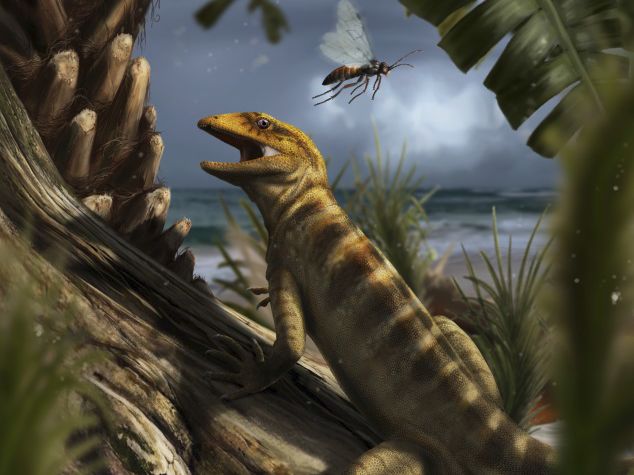Scientists say they have identified the world’s oldest lizard fossil — a discovery that sheds light on the evolution of lizards and snakes.

The fossil, which is 240 million years old, is called Megachirella wachtleri and is believed to be the most ancient ancestor of scaled reptiles known as squamates. The conclusion is based on an analysis of data from both living and extinct reptiles.
The research by scientists in Alberta — as well as in Australia, Italy and the United States — was published Wednesday in the journal Nature.
“It’s a fossil lizard that we found to be the oldest-known lizard on the planet,” said Tiago Simões, a PhD student in the University of Alberta’s biological sciences department and the study’s lead author.
READ MORE: U of A scientists use dinosaur teeth to discover how big lizards hunted
The specimen is 75 million years older than thought when it was first described in 1993, he said.
Simões said it fills a gap in understanding the evolution of lizards and snakes.
There are about 10,000 species of squamates around the world, and scientists say they are still learning about the early stages of the animals’ evolution.
Researchers initially thought the fossil, which was found in northern Italy’s Dolomite Mountains, was related to but not actually a lizard.
Further analysis, however, determined it to be the oldest relative of existing lizards and snakes, which, Simões pointed out, are essentially limbless lizards.
He said researchers in the last four years compiled the largest dataset ever. It included micro CT scans, photographs and molecular analysis rather than relying on previous research.
“We are sure it’s a lizard by the particular combination of features,” said Simões.
Some of those features include the shape of bones in the brain, shoulder and trunk of the fossil. The results indicate a more gradual evolution than previously thought.
“It’s important … to understand how such a diverse and important component of the modern biological world originated,” said Simões. “There has been a lot of hot debate in the past.
“For the first time, we are providing agreement.”
He said it’s also valuable to know how invertebrates evolved during drastic shifts in environmental conditions.
READ MORE: Researchers at the University of Alberta name new dinosaur
“One of the things we learned in this study was that most of the larger groups of reptiles were already present in the Permian period, which means they were present and evolved before the largest mass extinction in the history of the planet.”
The Permian mass extinction killed about 90 per cent of the Earth’s species.
“Fossils are our only accurate window into the ancient past,” explained Michael Caldwell, professor of biology and co-author on the study. “Our new understanding of Megachirella is one point in ancient time, but it tells us things about the evolution of lizards that we simply cannot learn from any of the species of lizards and snakes alive today.”



Comments